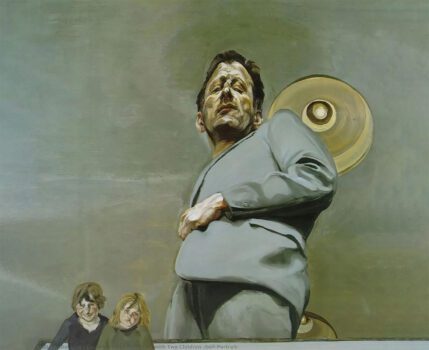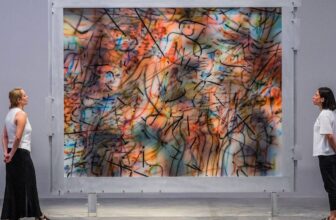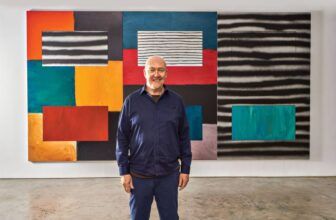What Was Lucian Freud Known For
In a modest studio in London’s Holland Park, the paint on the floor was thick like crusted soil, layers of history formed by decades of obsessive work. The air was often dense with turpentine and oil, and a silent tension loomed as Lucian Freud stood before his canvas, brush in hand, eyes piercing his subject. For Freud, painting wasn’t merely an act of creation; it was a deep excavation of the human form, psychology, and raw truth. Each brushstroke carried the weight of observation, intimacy, and relentless scrutiny.
Lucian Freud: A Brief Portrait of the Man Behind the Canvas
Born in Berlin in 1922, Lucian Freud was the grandson of Sigmund Freud, the father of psychoanalysis, a fact often romanticized in attempts to decode the psychological intensity of his work. The Freud family fled Nazi Germany in 1933 and settled in England, where Lucian later attended the Central School of Art in London and Goldsmiths College. He quickly emerged as a significant figure in post-war British art.
Lucian Freud was not a conventional man. He was a recluse in many ways, yet his presence was magnetic. A night owl, gambler, and famously private, Freud’s personal life was as layered and complicated as his paintings. But it was in the solitude of his studio that Freud built his legacy, stroke by stroke, sitter by sitter.
What Was Lucian Freud Known For?
Lucian Freud was most famously known for his intense, unflinching portraits and nudes. Unlike idealized depictions of the human form, Freud’s work revelled in the imperfections, sagging flesh, weary expressions, and postures that suggested a heavy, complex inner life. His subjects often appear vulnerable, caught in a moment of profound stillness or fatigue. His painting Benefits Supervisor Sleeping (1995), a reclining nude of a plus-sized woman sprawled across a couch, became iconic for this very reason, it defied norms of beauty and celebrated authenticity.
Freud’s work invites the viewer not to admire, but to look. And not just to look, but to confront. He turned the human body into a psychological landscape, mapping every blemish, wrinkle, and fold with painful honesty. His portraits seem to suggest: “This is what we really are.”
How Does Lucian Freud Make His Artwork?
Lucian Freud was notoriously meticulous. He often painted from life, demanding long hours of sitting from his models, many of whom were close friends, lovers, or family members. He preferred a vertical easel, stood while he painted, and rarely worked from photographs. His process was slow, laborious, and deeply personal.
He would sometimes spend hundreds of hours on a single portrait. For instance, a portrait of Queen Elizabeth II took 19 sittings and resulted in a small, intensely scrutinized likeness that polarized critics and viewers alike. Freud often worked at night, under the dim light of a single bulb, carving form and character into the canvas with short, textured brushstrokes.
One of Freud’s unique techniques was his use of “impasto”, a method of laying on paint thickly so that it stands out from the surface. His surfaces are tactile, often resembling the very flesh he was depicting. He built his figures with paint like a sculptor with clay, layer upon layer, always in pursuit of some elusive truth.
What Art Style Is Lucian Freud Associated With?
Freud is most closely associated with Realism, specifically figurative realism, a movement that sought to reclaim representation in painting during a time when abstraction was dominant. However, calling Freud simply a realist is limiting. His work carries a psychological depth that aligns him with Expressionism, and his methodical layering owes much to Classical traditions.
In his early career, Freud’s work had a crisp, linear quality, influenced by surrealism and German Renaissance painters like Albrecht Dürer. But by the 1950s, his style evolved into the thick, visceral realism he became known for. This change coincided with his move from painting with fine sable brushes to using hog-hair brushes, which allowed for broader, more expressive strokes.
In many ways, Freud stood apart. While the art world chased modernism and abstraction, Freud remained committed to the figure, to the raw, unidealized truth of the body and psyche. His work was introspective, emotional, often unsettling, yet undeniably masterful.
What Materials Does Lucian Freud Use?
Freud’s primary medium was oil on canvas or linen. He favored traditional materials but used them in innovative ways. His palette was generally earthy, ochres, umbers, greys, and muted flesh tones, emphasizing the corporeal weight of his subjects.
In the early days, he also experimented with drawing and etching. His etchings, though fewer in number, are highly prized and showcase his draftsmanship and sensitivity to line. Freud often made preliminary sketches, but the main work happened directly on the canvas.
The physicality of his paintings, the sheer material presence, comes from the way he applied paint: thick, sculptural, deliberate. His brushes were often worn down to stubs, the paint applied not for aesthetic prettiness, but to capture the essence of the sitter.
What Is Lucian Freud’s Famous Artwork?
Freud produced many notable works, but a few stand out as milestones in his career:
1. Benefits Supervisor Sleeping (1995)
Perhaps his most famous painting, this large canvas depicts Sue Tilley, a benefits supervisor, asleep nude on a couch. It broke records at auction and epitomizes Freud’s raw, unfiltered approach to the human body.
2. Girl with a White Dog (1951-52)
This portrait of his first wife, Kitty Garman, showcases his early precision and emotional restraint. Kitty, with a white dog at her side, stares vacantly into the distance, her robe slipping off one shoulder, intimate yet distant.
3. Reflection (Self-portrait) (1985)
Freud painted many self-portraits throughout his life. This one captures him with fierce, almost accusatory eyes, every wrinkle mapped with surgical care. It’s Freud dissecting Freud, psychologically naked.
4. The Brigadier (2004)
A portrait of Andrew Parker Bowles, painted with such obsessive attention to detail that the folds of his military uniform seem to breathe. It’s a masterclass in character portrayal.
5. Large Interior, W11 (after Watteau) (1981–83)
A complex multi-figure composition, this work pays homage to Jean-Antoine Watteau while anchoring itself in the gritty realism of Freud’s world.
How Much Does Lucian Freud’s Art Cost?
Lucian Freud’s paintings are among the most expensive contemporary artworks in the world. In 2008, Benefits Supervisor Sleeping sold at Christie’s for $33.6 million, setting a record at the time for a work by a living artist.
Other works have fetched similarly astronomical sums:
The Brigadier sold for $34.9 million in 2015.
Portrait on a White Cover went for $23.1 million in 2015.
His works on paper and etchings also command high prices, often ranging from $500,000 to several million, depending on rarity and subject.
Since Freud’s death in 2011, the value of his art has continued to rise, bolstered by major retrospectives, scholarly reevaluations, and increasing scarcity. Owning a Freud is not just a financial investment, it’s a possession of psychological intensity.
How Many Artworks Does Lucian Freud Have?
Estimates suggest that Lucian Freud created between 750 to 1,000 works in his lifetime. This includes paintings, drawings, and etchings. Given the length of time he spent on each work, sometimes over a year, it’s a relatively small number compared to prolific artists like Picasso. But the intensity of labor and concentration he poured into each piece makes his output feel monumental.
His catalog raisonné (the definitive listing of his works) is still being compiled and expanded, but key works are now housed in private collections and major institutions across the globe.
Where Is Lucian Freud’s Artwork Located?
Lucian Freud’s work can be found in the collections of some of the most prestigious museums and galleries worldwide:
Tate Britain (London): Houses a number of Freud’s important works and hosted a landmark retrospective in 2002.
National Portrait Gallery (London): Freud’s portraits, especially of cultural figures, are regularly featured.
The Metropolitan Museum of Art (New York): Home to several of his paintings and drawings.
The Museum of Modern Art (MoMA) (New York): Holds works that chart Freud’s early and mid-career.
The Art Institute of Chicago, The Hirshhorn Museum, and The Museum of Fine Arts, Boston also hold Freud’s work.
The Lucian Freud Archive, established posthumously, continues to document and preserve his legacy, with select exhibitions and loans to institutions.
In addition to museums, many of Freud’s masterpieces are held in private collections, making them rare and highly sought after when they appear at auction.
Lucian Freud’s Enduring Legacy
Lucian Freud died in 2011 at the age of 88, but his legacy looms larger than ever. In a world increasingly dominated by filtered realities and digital perfection, Freud’s raw, imperfect humanity feels more vital than ever. He didn’t just paint people; he exposed them, sometimes against their own comfort, sometimes against the norms of society, but always in pursuit of truth.
His studio remains preserved, his brushes still in jars, and the marks on the floor unmoved. It’s a shrine to artistic obsession, a place where reality was pulled through the eye of a needle and laid bare on canvas.
Freud once said, “My work is purely autobiographical. It is about myself and my surroundings.” Yet, through this obsessive self-focus, he created a mirror for us all. In the folds, scars, and stares of his sitters, we find our own flesh and flaws reflected, fragile, human, and eternally fascinating.




